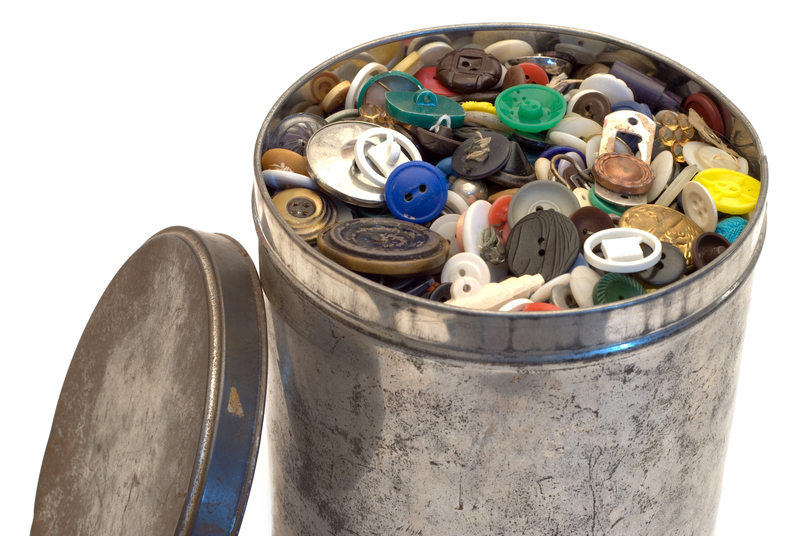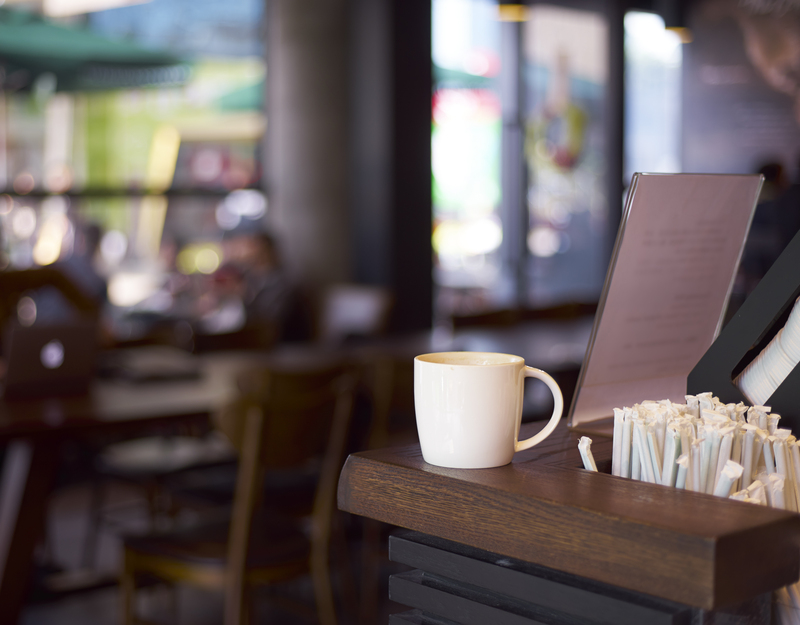The Plastic No-Go List: What to Evade
Plastic has permeated every aspect of our daily lives, from packaging and personal care products to children's toys and household items. But not all plastics are created equal. Some pose serious health and environmental risks. This comprehensive guide highlights the Plastic No-Go List--the specific types of plastics, additives, and products you should avoid for the sake of the planet and your personal well-being.
Understanding the Plastic Problem
Plastics are synthetic materials made from polymers, derived primarily from petrochemicals. Since their commercial introduction in the 20th century, plastics have become ubiquitous, offering convenience and durability. However, the plastic pollution crisis is now impossible to ignore. According to the United Nations Environment Programme, over 400 million tons of plastic waste are generated each year, with less than 10% being recycled.
The environmental and health impacts of plastics come from persistence in landfills, microplastic pollution, chemical leaching, and toxicity to wildlife and humans. By understanding which plastics are the most problematic, you can make better choices in your own daily consumption. Below is your go-to Plastic No-Go List--a detailed breakdown of what you should avoid and why.

The Plastic No-Go List: Types to Avoid
#1. Polyvinyl Chloride (PVC) - The Poison Plastic
- Plastic Resin Code: 3
- Common Uses: Pipes, cling wrap, bottles, blister packaging, some children's toys.
PVC is infamous for its environmental and health hazards. The manufacturing process releases dioxins, which are highly toxic and can cause cancer, birth defects, and endocrine disruption. PVC products often contain dangerous additives like phthalates, which have been linked to hormone disruption, asthma, and reproductive issues, especially in children.
- Why Avoid: Leaches harmful chemicals, non-recyclable in most communities, major source of persistent pollutants.
- What to Look For: Avoid products labeled "vinyl" or "PVC", especially food packaging and toys.
#2. Polystyrene (PS) - The Disposable Dilemma
- Plastic Resin Code: 6
- Uses: Foam coffee cups, takeout containers (Styrofoam), packing peanuts, disposable cutlery.
Polystyrene products are among the least recycled and most environmentally damaging plastics. When exposed to heat or certain foods, polystyrene can leach styrene, a probable human carcinogen and neurotoxin. It also breaks into microplastics easily, persisting in soil and waterways for centuries.
- Why Avoid: Toxic leaching risks, non-biodegradable, challenging to recycle.
- What to Look For: Avoid foam food packaging, single-use polystyrene plates, plastic utensils.
#3. Polycarbonate & Other Plastics with Bisphenol A (BPA)
- Plastic Resin Codes: Typically in 7 (Other)
- Common Uses: Reusable water bottles, baby bottles (older models), food storage containers, can linings, thermal receipts.
BPA and its alternatives (like BPS) are known to leach estrogen-mimicking chemicals. These compounds disrupt hormone function and have been associated with developmental and reproductive toxicity, obesity, and increased cancer risk. Even BPA-free plastics may contain similarly concerning chemicals.
- Why Avoid: Hormone disruptors, accumulative exposure, not always labeled clearly.
- What to Look For: Ditch any polycarbonate items; for food and drink, opt for glass, stainless steel, or safe plastics labeled BPA-free and demonstrably non-toxic.
#4. Non-Recyclable or "Compostable" Bioplastics
- Plastic Resin Codes: 7 (Other)
- Common Uses: PLA clear cups, some food packaging, compostable utensils.
Many supposedly "green" plastics, such as polylactic acid (PLA) and oxo-degradable plastics, need special commercial composting facilities to break down. They cannot decompose in regular landfills or backyard compost bins. If sent to regular trash, their environmental benefit is lost, and they may cause recycling contamination.
- Why Avoid: Greenwashing, complicates recycling, rarely truly compostable outside industrial facilities.
- What to Look For: Avoid misleading "compostable" plasticware unless you have access to commercial composters.
Problematic Plastic Additives to Evade
Phthalates: The Hidden Hormone Hackers
Phthalates are a group of chemicals used to make plastics (especially PVC) flexible and harder to break. They migrate out of plastics easily, especially in contact with fatty foods, and have been linked to reproductive toxicity, developmental issues, and increased allergy/asthma risks in children.
- Where Found: Food packaging, children's toys, personal care products, vinyl flooring.
- How to Avoid: Avoid plastics with resin code 3, and products labeled "vinyl" or "PVC". Prefer products labeled phthalate-free.
Bisphenols (BPA/BPS): Subtle Yet Serious
BPA and its substitute BPS are in many "hard" plastics and food can linings. They are persistent and mimic natural hormones, risking negative effects on reproduction, metabolism, immunity, and children's neurodevelopment. "BPA-free" claims often mask usage of similar bisphenols such as BPF or BPS, which may be just as risky.
- Where Found: Polycarbonate drinkware, water bottles, sports equipment, can linings, cashier receipts.
- How to Avoid: Prefer glass, stainless steel, and certified non-toxic options. Limit canned foods.
Single-Use Plastics: The Main Offenders
Single-use plastic items are the leading contributors to the plastic waste crisis. These products are designed to be discarded after use, often ending up in landfills, oceans, and waterways--where they break down into microplastics.
Key Single-Use Plastics to Steer Clear Of
- Plastic straws and stirrers: Devastating for marine life, virtually unrecyclable.
- Plastic bags: Major source of litter and wildlife injury, persist in environment for hundreds of years.
- Disposable cups and lids: Laminated with plastics, difficult to recycle.
- Cutlery and plates: Often made of polystyrene or polypropylene, rarely recycled.
- Food wrappers and sachets: Small size and composite material complicate recycling efforts.
By refusing these items and choosing sustainable alternatives, you reduce your plastic footprint significantly.
Plastics in Food Contact: What to Avoid
Food-grade plastics aren't all created equal. Some leach chemicals, especially when heated or in contact with acidic/fatty foods. Here's what not to use:
Unsafe Plastics for Food and Drink
- #3 (PVC): Contains phthalates and often lead stabilizers.
- #6 (Polystyrene): Can release styrene when heated.
- #7 (Polycarbonate and Others): Often contains BPA or similar compounds.
Safer Alternatives: Use glass, stainless steel, ceramics, or plastics labeled 2 (HDPE), 4 (LDPE), and 5 (PP) for cold food storage. Avoid microwaving any plastics, unless marked microwave-safe and BPA-free.
Recycling Realities: Know Before You Throw
Many plastics on the market are not recyclable through curbside programs. Check local municipality guidelines, but in general:
- #1 (PET, PETE): Widely recyclable, but only for bottles and containers--not plastic films.
- #2 (HDPE): Most recyclable; common in milk jugs and detergent bottles.
- #3, #6, #7: Rarely recyclable, almost always sent to landfill.
- Plastic bags and films: Cannot be recycled curbside; take to dedicated drop-off locations.
Don't contaminate recycling bins with items from the Plastic No-Go List--they'll likely be trashed and may spoil the batch for truly recyclable items.
How to Reduce Your Exposure and Plastic Waste
1. Be Label Literate
- Learn the resin codes and avoid numbers 3, 6, and 7 unless labeled as safe bio-based plastics.
- Don't trust "compostable" or "biodegradable" plastics unless they are certified for your local facility.
2. Choose Safe Materials
- Opt for glass, metal, bamboo, or natural fiber alternatives wherever possible.
- Shop for products labeled BPA-free and phthalate-free.
3. Rethink Food Storage
- Use glass containers for leftovers and lunchboxes.
- Avoid heating food in any kind of plastic.
4. Support Policy Change
- Encourage your community and lawmakers to implement bans on single-use plastics, unsafe resins, and harmful additives.
- Participate in local recycling and beach clean-up programs.
5. Be an Informed Consumer
- Read ingredient and materials lists for all products.
- Ask questions and support transparent brands.

Common Questions About the Plastic No-Go List
What plastic products are the most hazardous?
The worst offenders include PVC (resin code 3), polystyrene (6), products containing BPA/BPS (often code 7), and flexible films/wraps, which shed microplastics and disrupt recycling systems. Always scrutinize labels and choose safer alternatives when possible.
Are all single-use plastics harmful?
While the majority contribute to environmental degradation, some single-use items may be made from safer resins (like PP #5 or HDPE #2). However, their disposability and production still carry a significant ecological burden. Where possible, avoid or reuse single-use plastics.
Is "BPA-free" really safe?
Unfortunately, "BPA-free" plastics may contain similar chemicals like BPS and BPF, which can be equally harmful. Whenever possible, opt for non-plastic alternatives for food and beverages.
Can "eco" plastics mislead consumers?
Yes. Many companies market compostable or biodegradable plastics that only break down in special facilities. Unless you have access to these, it's best to avoid "greenwashed" disposable plastics and use reusable products instead.
Conclusion: Redefining Your Plastic Habits
Evading dangerous and unrecyclable plastics is a crucial step toward safeguarding your health and protecting the planet. The Plastic No-Go List offers a practical roadmap to make more informed decisions. Focus on steering clear of the worst offenders (PVC, polystyrene, and BPA-laden plastics), refuse single-use items, and seek out safer, sustainable materials whenever you can.
By making these conscious choices, you not only reduce your exposure to toxic plastic chemicals but also help to stem the tide of plastic pollution at its source. Your daily habits truly make a difference in creating a healthier, less plastic-dependent world.
Together, by saying "no" to high-risk plastics, we can inspire a sea change toward a cleaner, greener, and safer future.